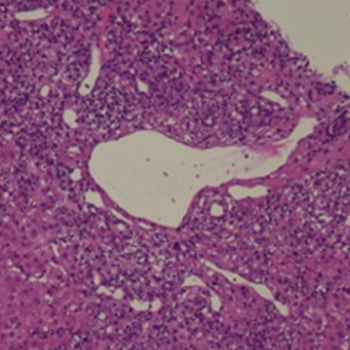Keywords
Acute hepatitis, COVID-19, autoimmunity
Abstract
Introduction: Recently, medical interest has been growing in SARS-CoV-2 infection and its multiorgan involvement, including the liver. Up until now, a few reports have described autoimmune hepatitis (AIH) triggered by SARS-CoV-2 infection, but no data are available about the specific liver inflammatory infiltrate and cluster of differentiation. We report a case of AIH triggered by SARS-CoV-2 infection, with a particular focus on its histological and mainly immunohistochemical features.
Case description: A 60-year-old man, with a history of paucisymptomatic SARS-CoV-2 infection that occurred one month earlier, was admitted for alterations of hepatocellular necrosis and cholestasis indexes. He completed vaccination for SARS-CoV-2 a year earlier. The serologies for hepatotropic viruses were negative. The anti- smooth muscle antibodies (ASMA) and antinuclear antibodies (ANA) results were positive. Anti-liver kidney microsome (anti-LKM) antibodies and antimitochondrial (AMA) were negative. By liver biopsy, haematoxylin-eosin staining highlighted severe portal inflammation with a rich CD38+ plasma cell component, while immunohistochemical staining showed low cell CD4+ count and prevalence of CD8+ and CD3+. After biopsy, the patient started an immunosuppressant regimen, with benefit.
Discussion: We can conclude that the patient developed a type 1 AIH triggered by SARS-CoV-2 infection. The presence of CD8 T-cells at immunohistochemical examination suggests different mechanisms from classic AIH. Similar cases are described after AIH triggered by SARS-CoV-2 vaccination.
Conclusion: The AIH after SARS-CoV-2 infection developed by the patient showed a histological picture similar to a classic AIH for the abundant presence of plasma cells, and immunohistochemical features similar to those described after SARS-CoV-2-vaccination.
References

Views: 304
HTML downloads: 27
PDF downloads: 228
Published:
2023-11-29
Issue:
2024: Vol 11 No 1
(view)










